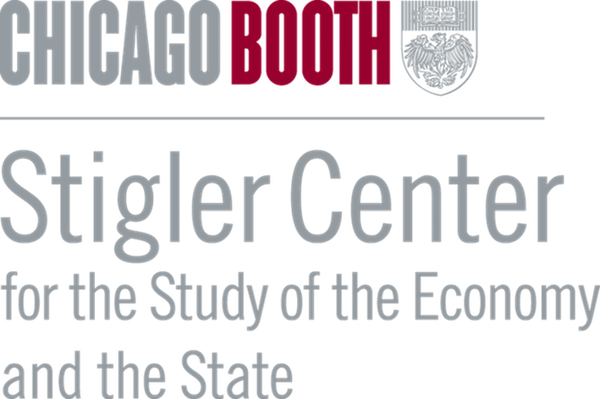The following is an excerpt from “Politics and Privilege: How the Status Wars Sustain Inequality” by Rory McVeigh, William Carbonaro, Chang Liu, and Kenadi Silcox, now out at Columbia University Press.
In this book, we will show that conflict over status privileges (rather than social class, cultural values, or identity politics) are currently driving the political process in the United States. Status is a word that is bandied about in casual conversations. While its intended meaning can vary in everyday usage, people typically think of it in terms of perceived value that cannot be reduced to dollars and cents, often reflecting lifestyles that people maintain. Max Weber, whose writings played a central role in shaping the discipline of sociology, famously distinguished among class, power, and status as distinct but interrelated bases for inequality in society. For our purposes, we borrow a definition from the sociologist Cecilia Ridgeway. Status, as she describes it, “is a comparative social ranking of people, groups, or objects in terms of the social esteem, honor, and respect accorded to them.” In the Jim Crow South, for example, a Black man might have been economically prosperous but was nevertheless denied esteem or respect from white members of the community because of the color of his skin.
Social scientists commonly focus on competition over material resources when examining intergroup conflict, but many others seek to identify the role of status, particularly in terms of how members of a dominant group respond to a perceived threat to their status. Going back many decades, scholars have focused on how the size of a subordinated group—with a particular focus on Black Americans—poses both a material and status threat to members of a dominant or privileged group. More recently, some scholars have used experiments to assess how white Americans respond when exposed to information about demographic transitions that will place the white population in the numerical minority in the not-too-distant future. Indeed, much of our understanding of how status operates in society is based on social psychological studies that focus on micro-level interactions between people, often using small group experiments to see how status differences linked to group memberships or identities affect individual decision-making processes. We view this work as important because it identifies ways in which status differences hold important consequences for individuals in a broad array of settings. However, in our work, we focus instead on how status hierarchies form as structures that maintain group inequalities at the societal level and how these status hierarchies intersect with politics to inhibit formation of progressive coalitions.
We find Ridgeway’s ideas about status particularly useful for thinking about the intersection of status and politics. As she expresses it, “As a micro motive for behavior, status is as significant as money and power. At a macro level, status stabilizes resource and power inequality by transforming it into cultural status beliefs about group differences regarding who is ‘better’ (esteemed and competent).” While recognizing the importance of social psychological approaches to status, Ridgeway offers a structural theory—“the cultural schema theory of status.” As she describes it, “Status hierarchies and rankings are a cultural invention that people have developed to manage a fundamental tension in the human condition. Whether they like it or not, people are repeatedly in situations in which they are cooperatively interdependent with others to achieve what they need and want to survive and prosper. But this shared need to coordinate on a cooperative goal effort creates a nested set of competitive tensions.”
From this perspective, status hierarchies, once formed, provide strong incentives for beneficiaries of the hierarchies to defend their positions. As we will discuss in greater depth in the chapters ahead, the payoff that comes from being at the top of a status hierarchy is not merely symbolic. The symbolic value of status is accompanied by a broad range of special treatments that are largely taken for granted by the beneficiaries. These circumstances, in turn, can prompt anger and resistance from status beneficiaries in response to an attempt to simply level the playing field by demanding equal treatment for all people.
Ridgeway’s cultural schema theory of status aligns well with contemporary understandings of how racial inequality is formed and sustained. Eduardo Bonilla-Silva published a seminal article in 1997 that laid the groundwork in sociology for a structural and relational understanding of racism. Importantly, the theory does not focus on labor market conflict but instead argues that we should think of race in terms of how it can structure social life—much in the same way that many scholars have analyzed social class in structural terms. Race can operate independently of social class and typically intersects with class, gender, and other salient attributes that affect peoples’ lives.
Bonilla-Silva argued that race is structural in the sense that racial categories are constructed and used to assign people to different positions in society. People draw on deeply embedded cultural schemas (similar to Ridgeway’s conceptualization) and come to think of people with different racial identities as being well suited for some positions but not others. Although fewer people in the contemporary era openly express racial or ethnic animosity or admit to holding biases, the consolidation (or overlap) of racial identities and social positions continues to structure the way in which people understand racial and ethnic differences and the way in which they respond to those differences. The alignment of racial identity and social position allows racism to continue to operate but “without racists.”
“Racism without racists” is a phrase that Bonilla-Silva used in later work to emphasize how racism is so deeply rooted in the organizational structure of society that it remains powerful without the need for overt expressions of bigotry that were once common in American society. Structural racism obscures individual agency, allowing members of a dominant group to feel like they are “color-blind” even while they are acting in ways that sustain inequality.
But how, exactly, are race and gender categories used to “assign” people to different positions in society? The sociologist Victor Ray’s recent theorizing helps to ground structural theories of race and gender by identifying organizations—such as workplaces and schools—as sites where people match identities and positions in observable and consequential ways. Ray’s focus on organizational settings also makes it easier to think about varying degrees to which organizations are “racialized” or “gendered.” A highly racialized workplace, for example, has a strong correlation between racial identities and positions in ways that provide white people in the organization with greater access to valued resources and power. In other settings, however, we might find that people with different racial identities are evenly dispersed across social positions in ways that suggest that race is not structuring rewards or social relations in that setting. Analyzing this variation opens promising paths for uncovering the most important causes of racialization within organizations but also within society. Attention to variation is critical because in American society some people are highly motivated to preserve status advantages; some are highly motivated to acquire status equality; and many fall somewhere in between. This variation, as we will show, helps us make sense of political behavior in the United States.
We emphasize that different sources of status can motivate political behavior. These can include the esteem and consequent societal privileges gained by virtue of one’s racial identity, gender, sexual orientation, gender identity, citizenship, or religious identity. Key to this focus on status hierarchies is the idea that categories having to do with race, gender, sexual orientation, and other identities are not objectively “real” but are instead socially constructed. In other words, categories such as African American, woman, or immigrant do not represent fixed attributes or an inherent objective reality. People instead create categories and give them meaning over time as they attempt to organize and make sense of the world in which they live. Differential power in society often drives this process, as the most powerful people draw and enforce exclusionary boundaries around categories to protect the advantages they may hold. Status hierarchies thus form as people draw on stereotypes and other cultural schemas, allowing them to use categorical distinctions to relegate people to different positions in society, with these differential assignments having important implications for gaining access to resources, rights, privileges, and social esteem. Actions that channel people into roles deemed culturally appropriate for women or for men, for example, create a structure of inequality if these actions are common within a society or within institutions or organizations. When status hierarchies form, beneficiaries typically come to assume that privileges and esteem that they enjoy by virtue of their position within the status hierarchy are natural and deserved. Efforts to challenge status hierarchies must overcome resistance from those who have a stake in the status quo and who equate what is traditional with what is correct, moral, or natural.
Excerpted from “Politics and Privilege: How the Status Wars Sustain Inequality” by Rory McVeigh, William Carbonaro, Chang Liu, and Kenadi Silcox. Copyright © 2025. Reprinted by permission of Columbia University Press.
Articles represent the opinions of their writers, not necessarily those of the University of Chicago, the Booth School of Business, or its faculty.
Subscribe here for ProMarket‘s weekly newsletter, Special Interest, to stay up to date on ProMarket‘s coverage of the political economy and other content from the Stigler Center.






